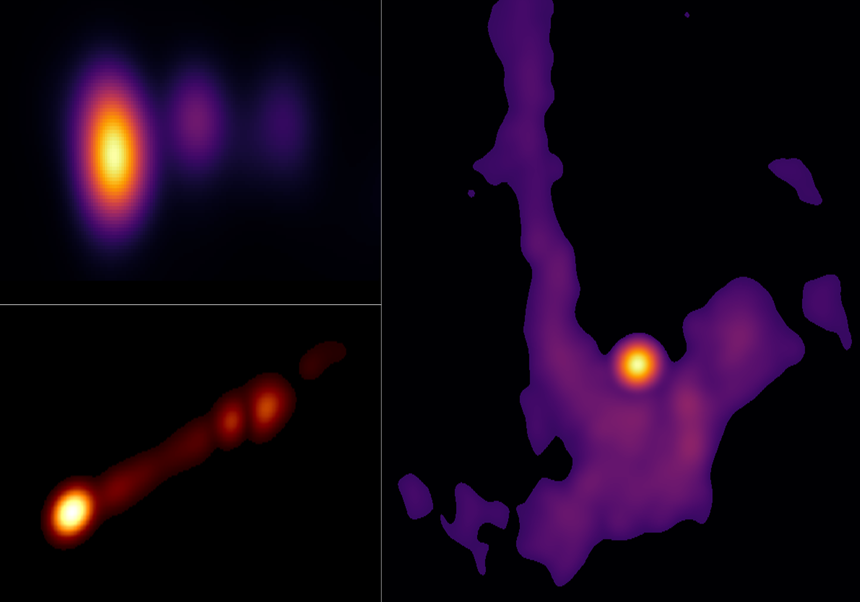
On the 18th of november, at 11:00 , iin the classroom of Lise Meitner, Faculty of Phyfiscs, C/ Doctor Moliner, 50. 46100 Burjassot, will take place the PhD thesis defense of Ezequiel Albentosa that has been supervised by Ivan Martí-Vidal, professor of that department
Abstract:
This thesis addresses two distinct aspects within the field of radio astronomy: (1) the characterization of the polarized structure of sources and their spectrum over a wide range of frequencies; and (2) the analysis of the variability of these sources.
The research carried out in this thesis is structured into two main parts: the study of sources observed with the ALMA and VGOS interferometers using robust closure observables that are independent of calibration; and the characterization, through time series analysis tools, of the variability of the active nucleus of our galaxy, Sagittarius A*, as well as atmospheric variability using interferometric observables obtained from geodetic VGOS observations.
The first part introduces closure traces, a novel interferometric observable that captures differential polarization information while remaining immune to calibration errors and atmospheric effects. Although closure traces do not retain absolute polarization, they robustly reflect relative changes in polarization structure, making them particularly suitable for sources with complex polarized morphologies. Two major applications are presented:
- The active galactic nucleus (AGN) of M87 is studied using ALMA data from the April 2017 Event Horizon Telescope (EHT) campaign. By fitting parametric models to the closure traces, key polarimetric properties such as the Faraday rotation measure are retrieved without relying on absolute calibration .
- The method is extended to wideband VGOS data of the blazar 1803+784. The broad frequency coverage allows for the simultaneous determination of the source structure, spectral index, polarization, core shift, internal and external Faraday rotation, and radial profiles of plasma density and magnetic field strength. From this, physical parameters of the relativistic jet are inferred, including brightness temperature, magnetic field geometry, and deviations from equipartition.
The second part focuses on the study of variability in astronomical sources and in the Earth's atmosphere. To this end, we employ classical tools such as the structure function, and develop a new estimator, the high-pass filter periodogram (HPFP), designed to overcome the limitations associated with the irregular sampling typical of radio astronomical observations. This tool allows for a more accurate characterization of the power spectral density, significantly improving the detection of weak periodicities. These techniques are applied to two distinct studies:
- The variability of Sagittarius A*, the supermassive black hole at the center of the Milky Way, is analyzed using full-polarization ALMA data from the April 2018 EHT campaign. After proper calibration, we reconstruct the full-polarization light curves and characterize the source’s variability, revealing coherent patterns in polarization variability and correlations with high-energy X-ray events. These results provide constraints on relativistic magnetohydrodynamic models of the accretion flow near the black hole.
- The variability of the troposphere and ionosphere is studied using high-cadence geodetic VGOS observations. Rapid fluctuations in the troposphere, particularly those on sub-minute timescales, are shown to affect interferometric observables such as group delays. If uncorrected, these variations can compromise the millimeter-level precision sought by VLBI geodesy.
Overall, this thesis advances polarimetric interferometry in two key directions: (1) the development of methods based on calibration-independent closure observables for robust study of the polarized structure of sources; and (2) the implementation of statistical tools for time series analysis for a rigorous study of variability, with direct applications in both astrophysics and high-precision geodesy.






